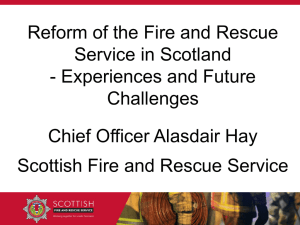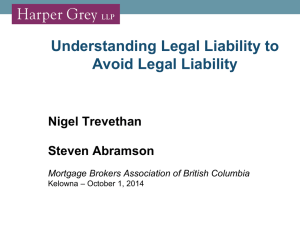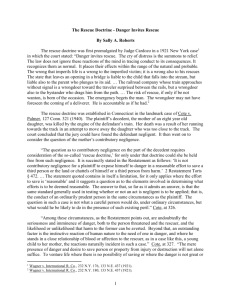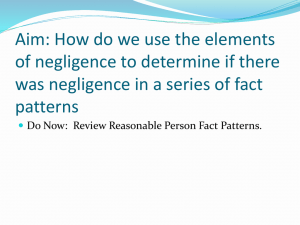Law & Ethics Chapter 1 – Law, Ethics, Business: An Introduction
advertisement
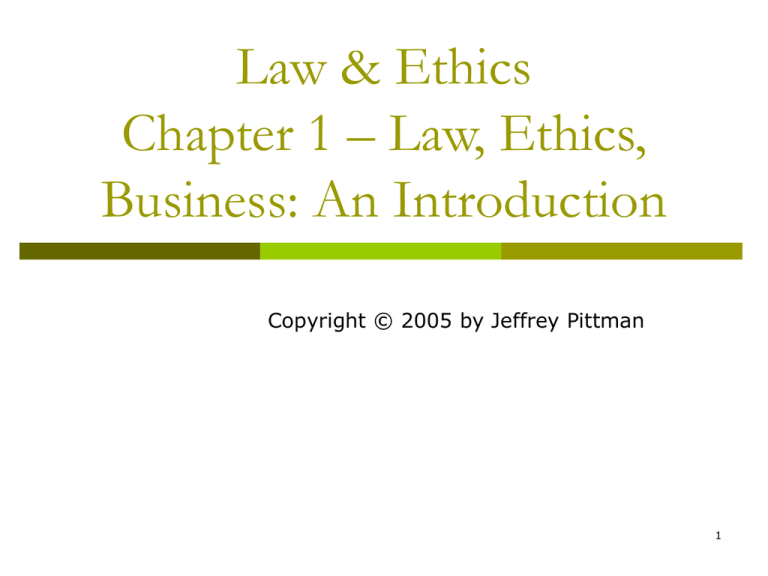
Law & Ethics Chapter 1 – Law, Ethics, Business: An Introduction Copyright © 2005 by Jeffrey Pittman 1 An Introduction How does the study of law vary from the study of ethics? Does the size and power of modern corporations change the relationship between the people and the government? 2 Freedom vs. Responsibility Hypothetical Problem #1 While at work, you receive a call from a distraught customer The customer is significantly behind in his payments to your company and tells you that he is financially ruined and he “has nothing to live for” 3 Freedom vs. Responsibility Do you have legal or ethical problems if you respond as follows: You tell the customer that, if he is serious, his car exhaust in a closed garage (carbon monoxide poisoning) is easy and pain free You immediately call the police to notify them of the situation You do nothing 4 Yania v. Bigan How do you respond to the four questions following the case, page 4 of the textbook? Relate Yania to hypothetical problem #1 5 Hurley v. Eddingfield Compare Hurley to Yania How do the cases differ? Does Hurley change your assessment of the opening hypothetical? 6 Professional Oaths/Codes of Conduct How has the Hippocratic Oath changed over time? See http://www.pbs.org/wgbh/nova/doctors/oath.h tml Is an oath binding? Are professional codes of conduct binding? 7 The Duty to Rescue Should we have a broad “duty to rescue” law? How does the Kitty Genovese murder affect your view of rescue laws? What are the parameters of existing duty to rescue situations? See pages 9-10 in the textbook (e.g., contractual obligations, “special relationships”, endangering another, etc.) 8 Good Samaritans How do state “Good Samaritan” statues impact the duty to rescue question? For Arkansas law, see A.C.A. § 17-95-101 (2005) 9 The Duty to Rescue What components would be contained in a duty to rescue statute? Consider the following issues: When would a “rescue” be required? What is a rescue? What if the attempted rescue worsens the situation? Who is required to rescue? Compensation for an injured rescuer? Compensation from whom? 10 Business Liability for Protection Hypothetical Problem #2 Your marketing firm does a significant amount of work for the Anti-Defamation League, an organization committed to stopping defamation of the Jewish people A car bomb exploded in your company parking lot kills a firm employee and a customer Is the firm liable for damages? 11 Business Liability for Protection McClung v. Delta Square What did the McClung court state about protection of customers? How would you address the case questions, pages 12-13 in the textbook? 12 Negligence The McClung decision is based on the tort of negligence The plaintiff must prove the following elements in a negligence case: The defendant breached a duty of due care owing to the plaintiff The plaintiff was injured The defendant’s breach “caused” the injury 13 Negligence Elements – Breach of a Duty of Due Care A breach of due care involves failing to use the same care a reasonable person would have used under similar circumstances The law does not require perfection, just reasonable care 14 Negligence Elements – Causation In proving causation, the plaintiff must establish two causation components: Causation in fact – did the injury occur because of the defendant’s actions (failure to use due care)? Proximate causation – was the injury foreseeable (was the injury likely enough to happen that a reasonably prudent defendant would have behaved differently)? 15 Defenses to Negligence Assumption of risk Comparative or contributory negligence 16


![GRADE: A-‐ QUESTION In Lamb v Camden LBC [1981] 1 QB 625 at](http://s3.studylib.net/store/data/008649165_1-edf01a7d1b600b3f2915b354d4866910-300x300.png)




